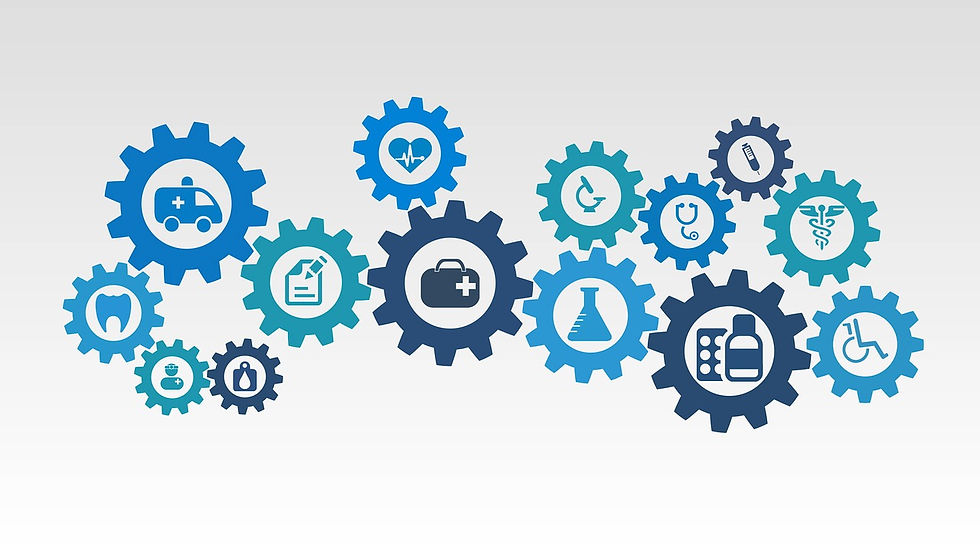Professional Identity and Social Media
- ALeeRDH

- May 26, 2019
- 3 min read
Updated: Aug 1, 2019

My professional identity as a Registered Dental Hygienist (RDH) has been shaped over the past four years during my private practice and clinical instructing experience. Each has a unique impact on how I present myself as an oral health care professional. In private practice, I strive to motivate my patients to see the value in oral health and to take control of their oral health. In the past, there has been a disconnect between oral health care and overall health care; It has been my goal to bridge this gap on a case by case basis one patient at a time.
As a clinical instructor at Dalhousie University, my role uses teaching methods to assist students in improving their hands-on and communication skills. As an educator, the way I conduct myself is a reflection of the profession to the students. I uphold the Canadian Dental Hygienists Association Standards and Code of Ethics rigidly in the educational setting to put forward a good example for the next generation of RDHs.
Growth as a professional requires reflection and evaluation of our experiences. In the educational setting, I have the opportunity to reflect on my experience each academic term; this has impacted and shaped my identity as an instructor. Initially, I was perceived by my students as unapproachable, but knowledgeable. This was a valuable learning experience, as I reflected on my actions in the clinic and what could be improved upon to grow as an instructor. It has made me a more self-aware instructor, which I value as a part of shaping my professional identity.
In the greater scheme of Canada’s health care system, I am a primary health care provider. Though my focus is oral health care, one of the most important aspects in caring for my patients is inter-professional collaboration. Oral health is integral to overall health, and to provide comprehensive care to all members of a patient’s health care team need to collaborate. One method of connecting with people is through social media. Since beginning the Masters of Health Studies Program at Athabasca University, I have had the opportunity to take a step back and assess my professional identity on social media and determine if I have been using it effectively.
Social media is a powerful tool used to share information with the world, however, it can also be detrimental if used inappropriately. In recent years, there have been many reports of health professionals using social media inappropriately. This can vary from sharing opinions that reflect poorly upon a profession to sharing patient personal information. As a result, many governing bodies for health care professions have added social media guidelines relating to the standards and codes of conduct for their profession. As an educator at Dalhousie University, I follow the social media guidelines put forth by the Dalhousie University Faculty of Health Professions; these guidelines complement the Personal Health Information Act (2010) which governs the collection, use, disclosure, retention, disposal and destruction of personal health information in Nova Scotia.
As a requirement for the course Critical Foundations in Health Disciplines in the Masters of Health Studies program at Athabasca University, I am developing a professional presence through an ePortfolio. In this space, I plan to bring together my established professional presence on social media and my educational journey as a graduate student. My two social media platforms that are found in my ePortfolio are my LinkedIn profile and Twitter account. Through this degree program, I plan to grow my social media presence and improve my interactions for greater health care collaboration and knowledge dissemination.
In conclusion, I have learned that my professional identity grows and changes with my experiences and interactions. The world of health care is continuously evolving, and I as a professional need to evolve with it. Technology has become an integral part of health care, and using it appropriately is crucial to maintaining professionalism. I believe it is important to embrace social media as a method to collaborate and share health care knowledge; I look forward to showing the online world who I am and the role I play as a Registered Dental Hygienist in Canada.
References:
Canadian Dental Hygienists Association. (2010, January). Entry-To-Practice Competencies and Standards for Canadian Dental Hygienists. Retrieved May 26, 2019, from www.cdha.ca/pdfs/Competencies_and_Standards.pdf
Canadian Dental Hygienists Association. (2012, June). Dental Hygienists' Code of Ethics. Retrieved May 26, 2019 from https://www.cdha.ca/pdfs/Profession/Resources/Code_of_Ethics_EN_web.pdf
Dalhousie University Faculty of Health Professions. (2014, September 25). Guidelines for the Student Use of Social Media and Electronic Communication in Practice Education Settings. Retrieved May 26, 2019, from https://www.dal.ca/faculty/health/practice-education/for-students/Social-media-guidelines.html
Personal Health Information Act. (2010, c. C-41). Retrieved May 26, 2019, from https://novascotia.ca/dhw/phia/PHIA-legislation.asp



Comments